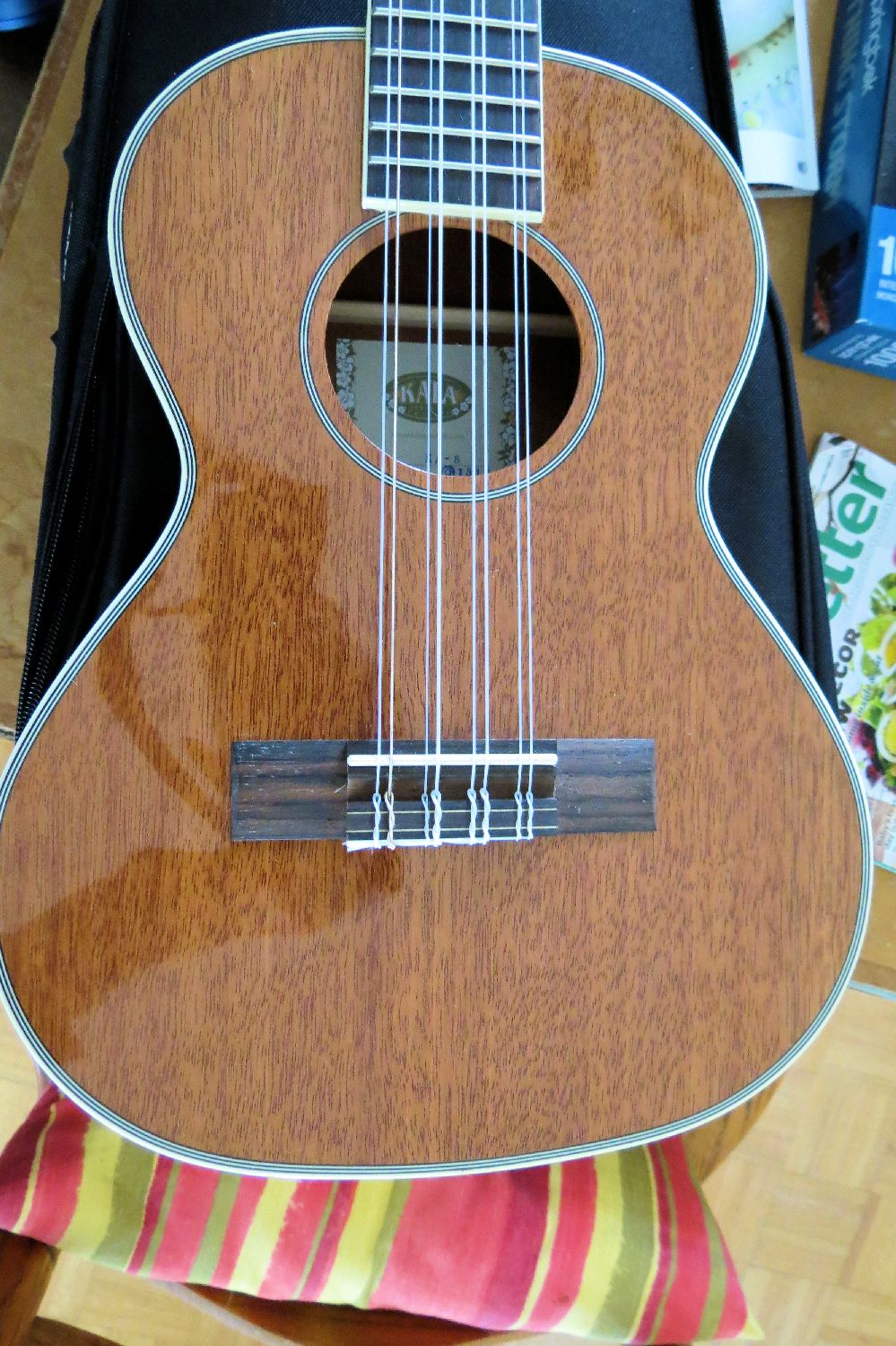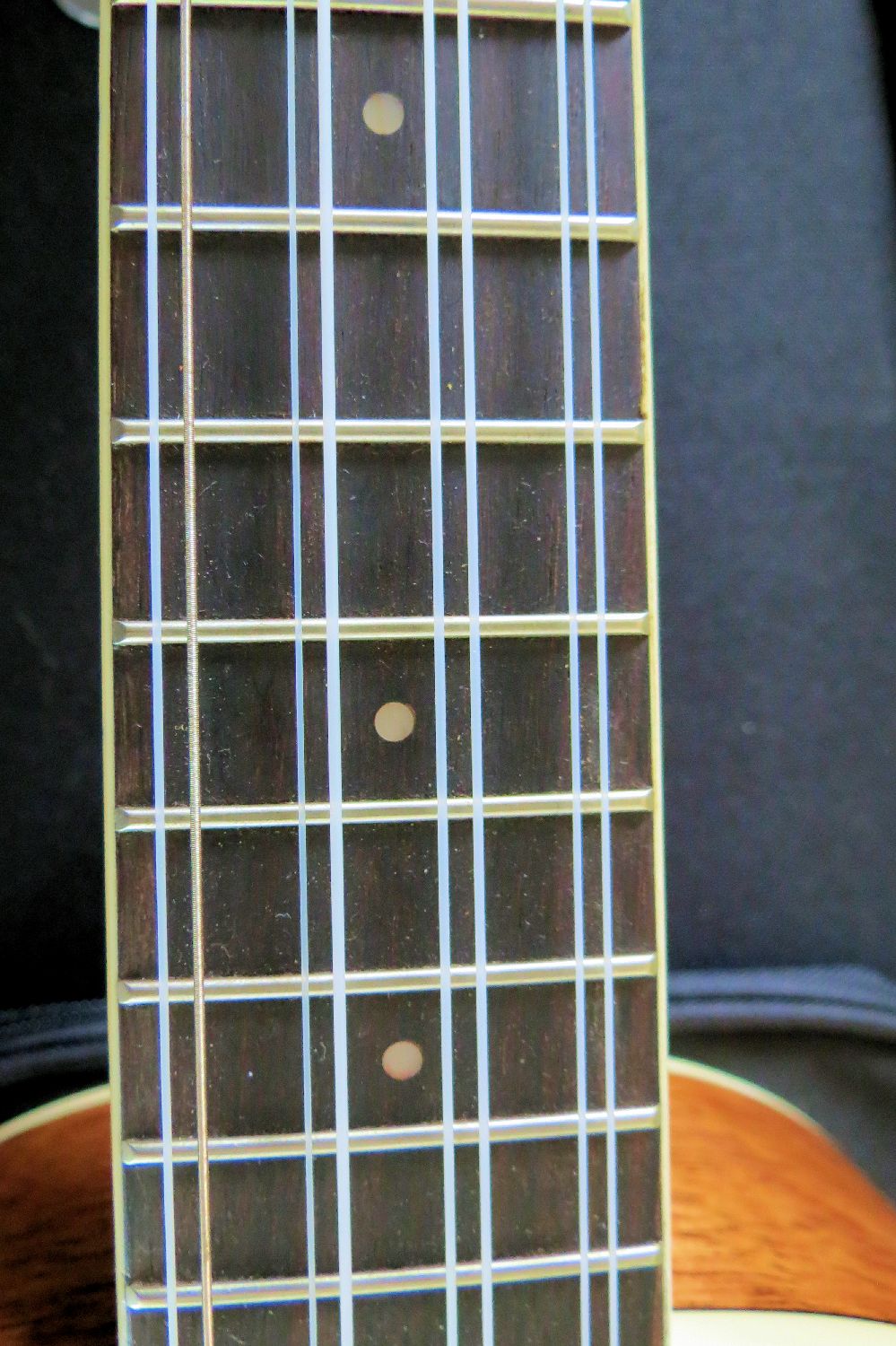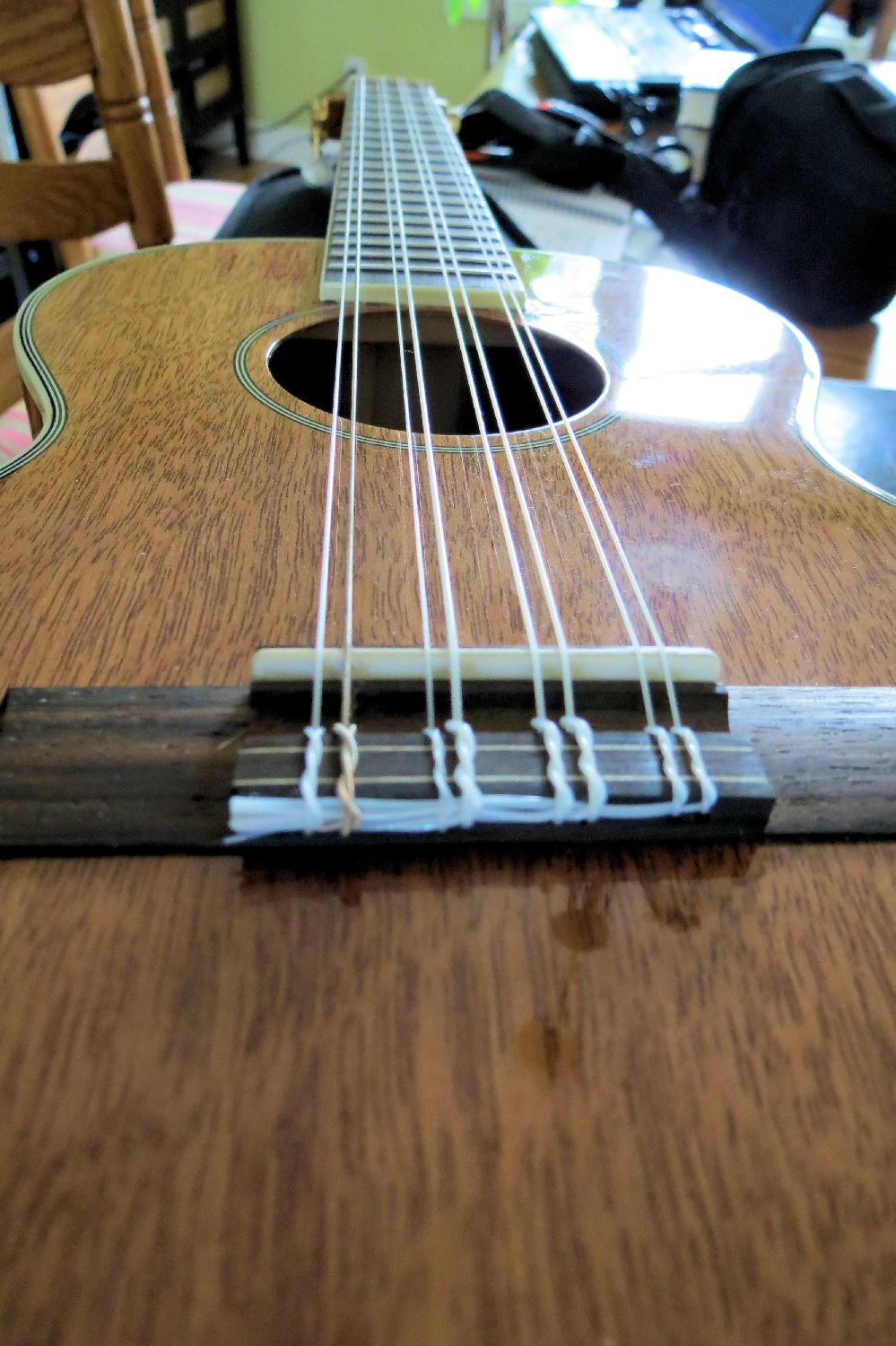







Kala 8-String
My wife often starts any ukulele-related conversation aimed at me with the words, "What on earth possessed you to..." when I show her the latest addition to the Chadwick uke collection. The latest is a Kala eight-string all-mahogany tenor. Her question was followed immediately by "Why would you buy an eight string when you already had one and sold it?"
Good question. I really wasn't in the market for another eight-stringed uke, and I was dithering about getting a new ukulele at all. My heart was set on a resonator - and I was looking for the Kala tenor resonator, a little unsure if it was the sound I wanted (I think what I really want is a metal-stringed reso uke, if there is such a beast...). But to be sure, I needed to play one a few times.
So there I was, again, in the Twelfth Fret in Toronto, gazing at their ukes for sale, trying a few, but with no tenor reso on the wall, I was just about to leave when the eight-string caught my eye. I took it down and strummed and that was it. My eyes glazed over. Caught in the flypaper of UAS.
But I have a valid reason (honest...). I wanted something with a different sound to help bolster the output of our local ukulele group. Something that complemented all those high-G ukuleles playing the same chords. What better than an eight-stringed uke? Ka-ching, the cash register sang. there goes my carefully hoarded savings.
That being said, for solo play, the eight-strings make a sound that is great for some music because of its fullness, but not all, so you need to have the usual four-stringed ukes as backup. But you already own more than one ukulele, right?
And once you graduate to eight strings, you will need to adjust your playing techniques if, like me, you fingerpick, because you have to get two strings at once. Just a matter of practice, really. And yes, you can fingerpick - you don't always need to strum an eight-stringed uke.
I also find the wider neck slows me down a bit, but again, it's all about practice.
The Kala is a little different from the Lanikai I had a while back, in that the Kala is a mahogany instrument, not spruce-topped like the Lanikai. I can't say exactly why, but it sounds a bit sweeter to me and the tonewood is the only reason I can think of (spruce is a nice tonewood but I prefer it for larger instruments like guitars).
Of course, the years since I owned the Lanikai may have eroded my memory somewhat. The Lanikai may have been a little fancier, too, but not enough to make a difference.
No matter what brand, the sound is very different from a four-stringed uke. Full, rich, but not quite like a ukulele. More like a mandolin, if mandolins had nylon strings. (I am reminded of Fred Neil's 12-string guitar when he and Vince Martin played Linin' Track back in '65...) It's tuned Gg-Cc-EE-AA (the first two sets in unison, the last two an octave apart respectively).
There are two considerations you have to keep in mind when buying an eight-stringed uke. First is spare strings. Always carry a spare set with every instrument. Does the retailler sell them? (Twelfth Fret doesn't) If not, where do you need to go to get a set (online? another seller? Aquila makes them...). I found I had to order a set from a local music store but the delivery date is uncertain.
Second question: will it stay in tune? Eight stringed ukes are like 12-string guitars: fussy to tune. And the nylon takes a few days to stretch and settle in.
It's frustratingly easy for one string of a pair to be a hair out of tune with the other and the resulting sound can be harsh, almost like a banjo. Tuning individual strings so close to the other is mechanically tricky. I use a guitar pick to make it easier to pluck one string alone, and gather all the Zen-like patience I can muster.
The big headstock - despite the slotting - makes the neck side a bit heavy and I recommend you get a couple of pins installed and use a strap. You can do this yourself with a rotary drill tool and some care, or just have the shop install it where you buy it. But it definitely benefits from a strap.
Overall: typical Kala product: well made, no flaws, good action, and the bottom bout seems well braced - I can't see any of the telltale bulge on the top that an overstressed bridge can make. Rosewood fretboard and bridge; I'm not sure what the saddle is made of (bone? plastic? Kala's website doesn't say).
Eight-stringed ukes aren't the instrument for everyone or every occasion, but they can be good in any group or jam session because they add to the sound. And they have a magic all their own for your solo play, too.
Would I purchase another Kala 8? Yes, but I
wouldn't own two eights at once.
Would I recommend them to others? Yes, if you
want the full 8-string sound or add something different to your
sound mix.
Rating (0-5): ***1/2
Status: Owned.
